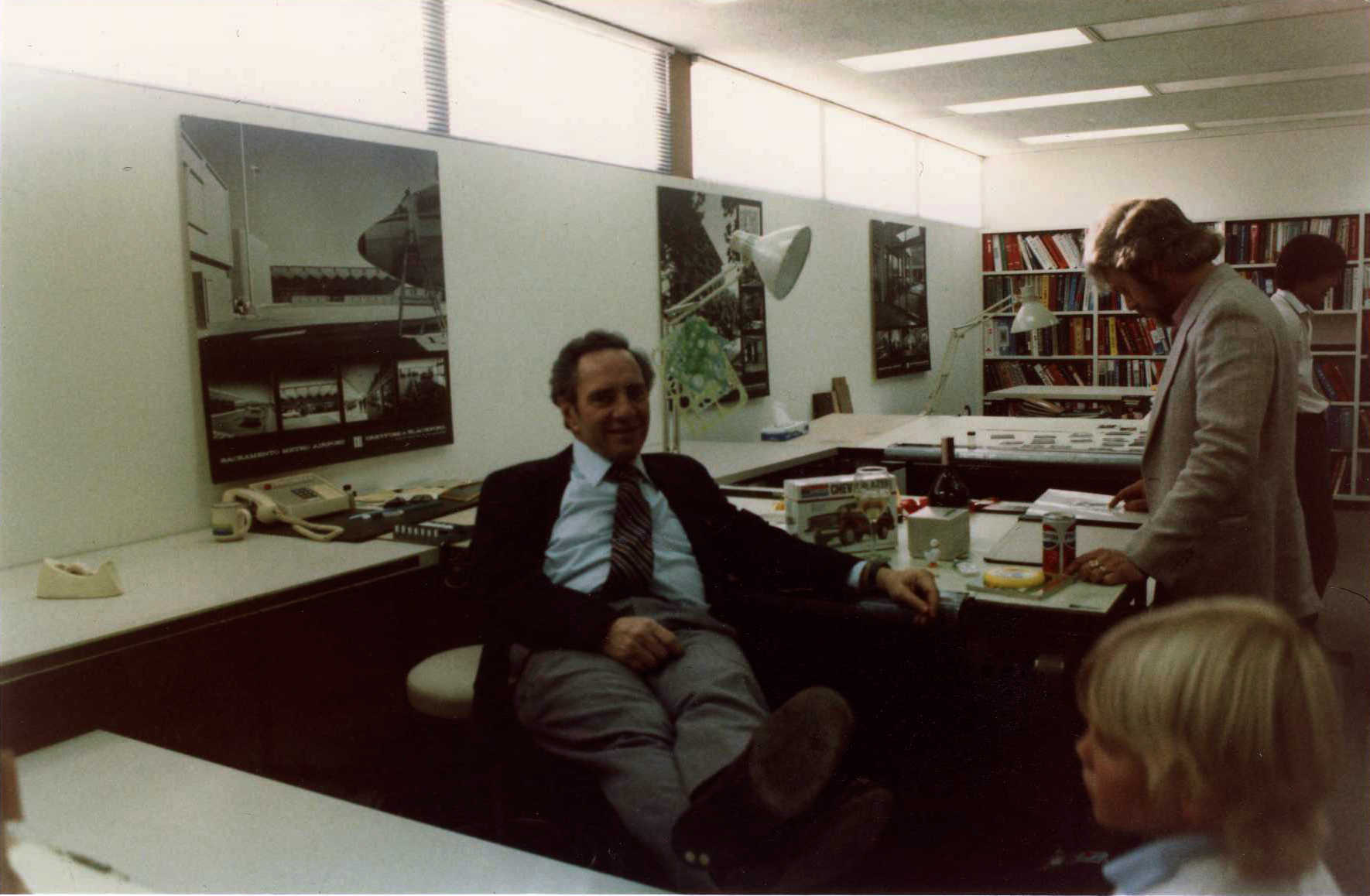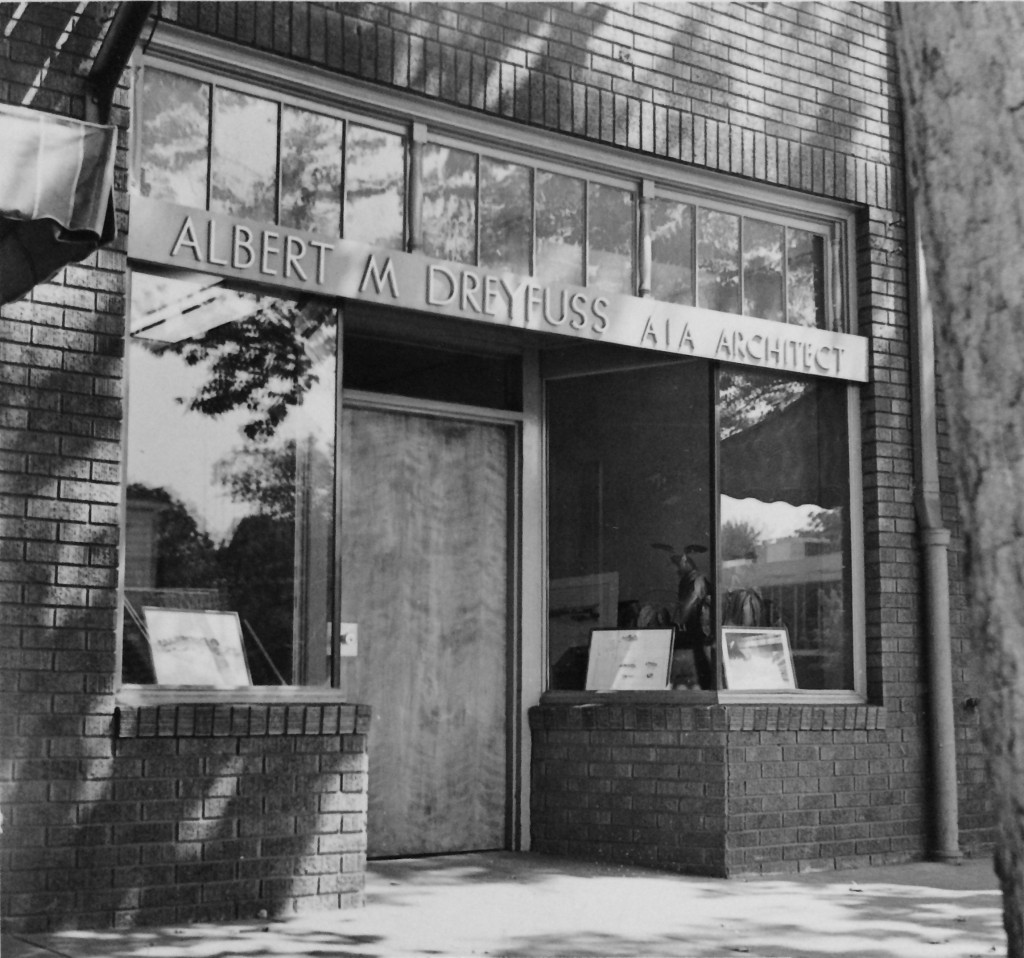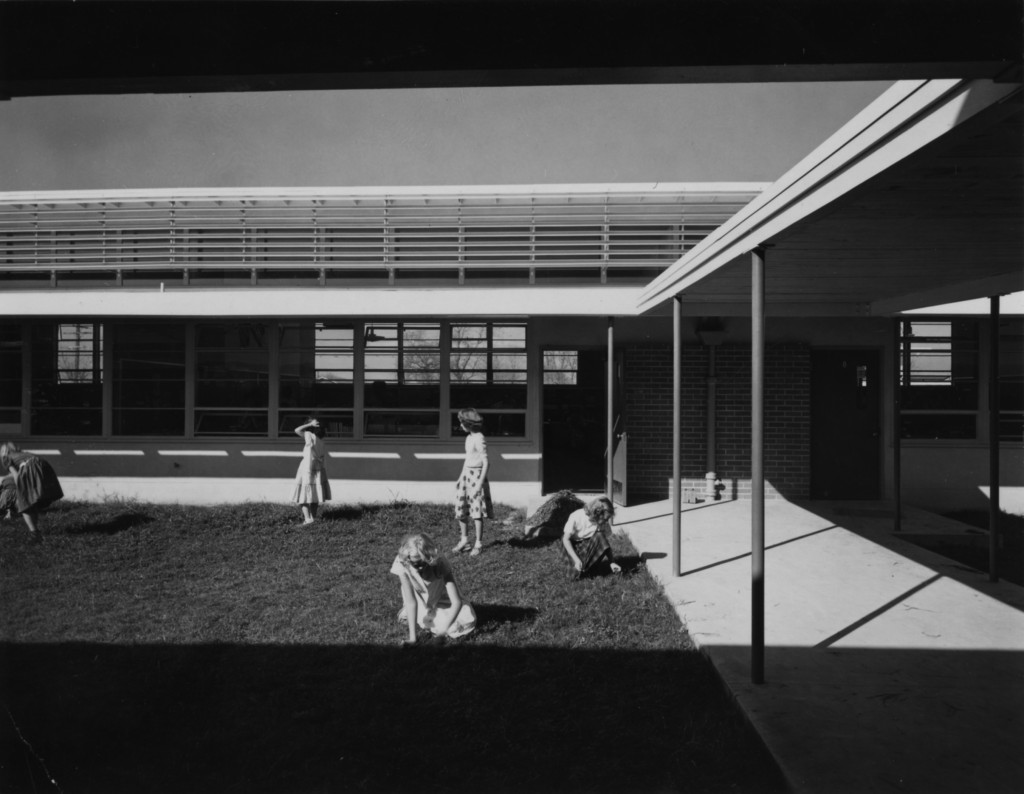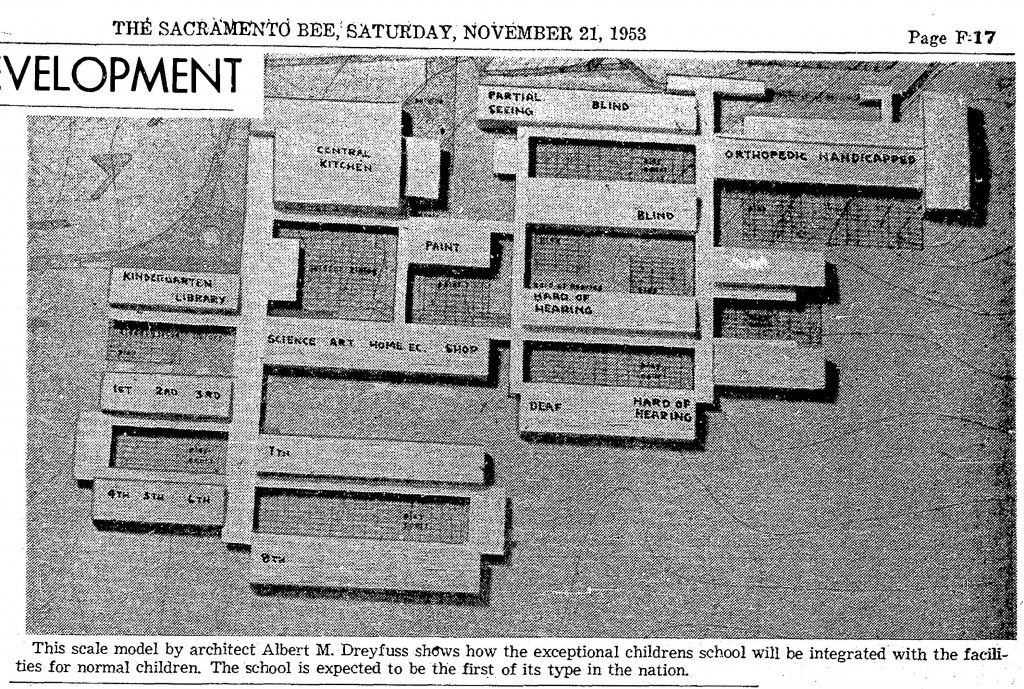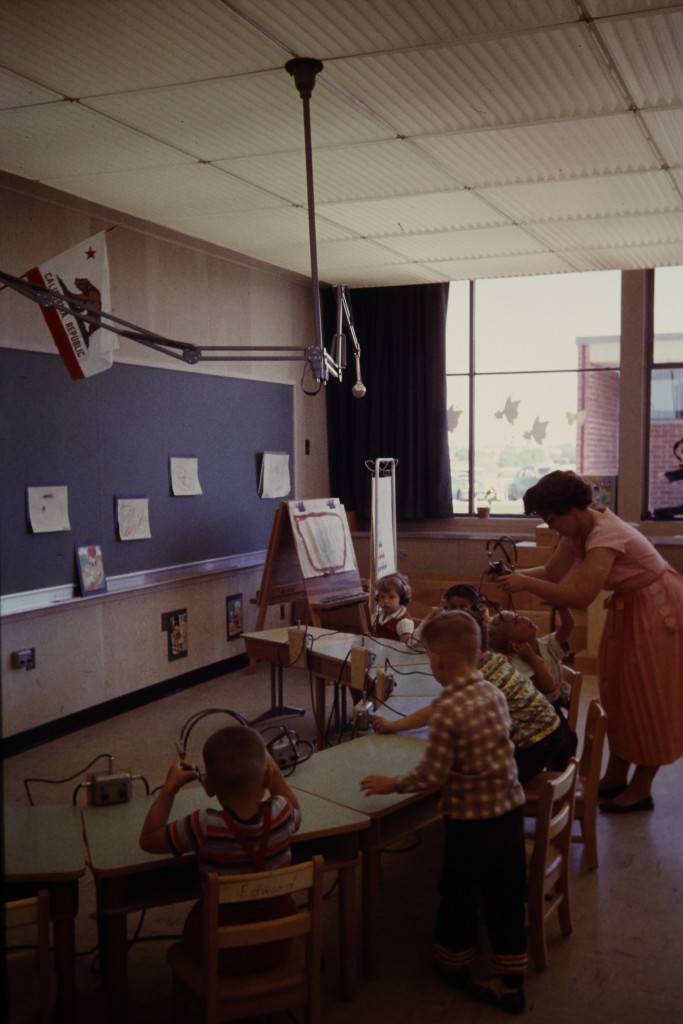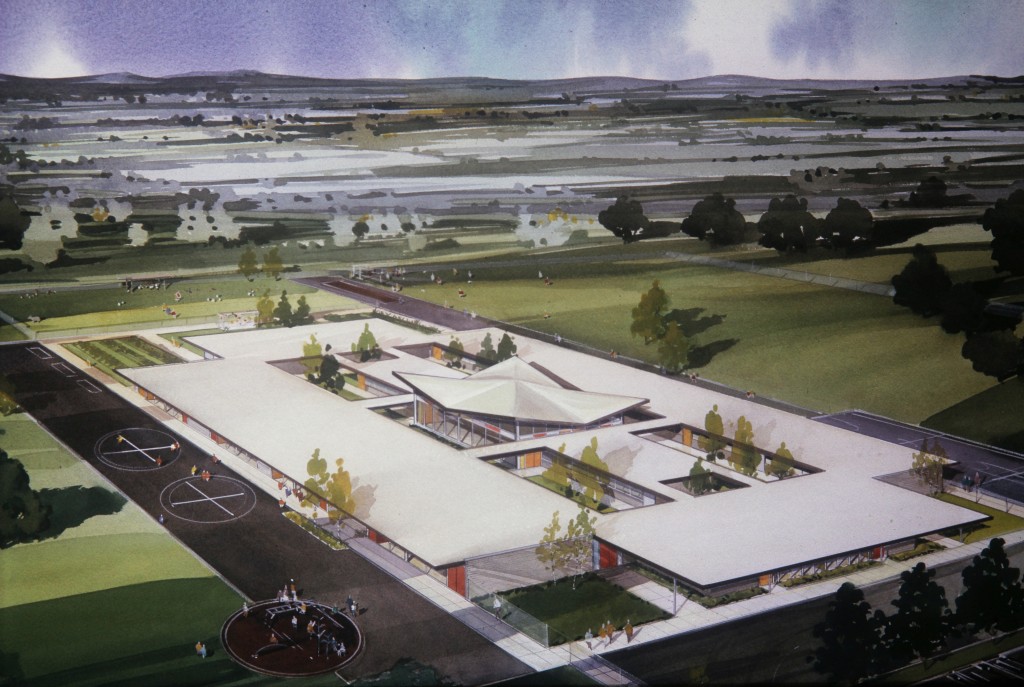Part 1: Remembering Al
Raquel Urbani
January 18, 2018
This is one of a three-part series about the architect, Albert M. Dreyfuss, who passed away Thursday, December 21, 2017. He was 97. Although largely credited with the business side of our firm, Albert (Al) Dreyfuss was a diverse, driven and accomplished architect. How he came to be in Sacramento is an interesting story in itself. Part 1 of this series is about his and our firm’s beginning, and his early school projects including three brand-new concepts in educational building design. Part 2 covers Al’s early residential work and his planning efforts in and around the Capitol. Part 3 reveals the formation of his partnership with Len Blackford and Al’s philanthropy and community service work.
Early Life
Al always knew he wanted to be an architect. He graduated high school in Shreveport, Louisiana at the age of 15, and started college at 16. A child of The Depression in the South, he learned early on about planning ahead and investing in the future. He enrolled at Tulane University shortly before the school announced it would be discontinuing its Architecture program. Finding a suitable curriculum at the University of Illinois, he made plans to transfer there. Al completed Architecture school in 1940, and design career prospects were little better than they had been when he started college.
Upon hearing about a ‘design’ job in the Caribbean, he hopped a plane to Trinidad. He soon realized it was mainly marine engineering, but it was work and he made some friends in the Navy. A year later, war broke out and his friends encouraged him to enlist.
At the age of 21, Al enlisted in the Navy and began sending money home to his father to invest for him to ‘start over’- if he ever returned. Always analytical, Al picked service on a submarine called the U.S.S Lizardfish, “so he didn’t have to come back in parts.”
When he eventually did return home, Al met his wife, Pearl, at a U.S.O. dance and three years later they moved to Sacramento.
He started our firm in 1950 when he was just 30 years old. In a new place far from where he grew up, at a time when the economy was tough, Al found that not limiting his practice to just one building type or sector kept his analytical mind busy, and the work was quicker to come by. That diversity of practice is a rare and unique part of his legacy we still continue with today.
His first office was located on J Street in Sacramento.
In the beginning, Al was designing new elementary and high schools for the districts in the area after World War II ended. People had returned home to Northern California and populations were booming.
Most of the schools were in Sacramento County unless otherwise noted below, and included:
- Bret Harte Union High, 1952
- Pueblo Vista Elementary in Napa County, (a.k.a. Salvador) 1952
- Soda Canyon Elementary in Napa County, 1952
- Thomas Kelly Elementary, 1952
- Mary Deterding Elementary (a.k.a. Panama), 1953
- Starr King Elementary, 1953
- Browns Valley Elementary, 1955
- Andrew Carnegie Elementary, 1960
- Billy Mitchell Elementary, 1960
- Charles Peck Elementary, 1960
- Camellia Elementary, 1960
- Rio Americano High, 1961
- Wheatland High in Yuba County, 1961
- Will Rogers Intermediate, 1962
- Guardian School, a National Fallout Shelter Competition, 1962
- Laurel Ruff Center, 1963
- Del Campo High, 1963
Starr King, a School for Exceptional Children
Disabled children were about to become educationally integrated, with the advent of Starr King Elementary School. As the first school of its kind in the country, designed to teach kids with all types of disabilities along side their able counterparts, it was referred to as “a school for exceptional children” and received multiple awards. Pardon the no-longer-politically-correct wording in the drawing below.
Flexibility in Learning Environments
The idea of adaptability was built into several of the new elementary schools. A departure from the current designs, the schools gave teachers the flexibility to assemble students in groupings ranging from 30-180. The new plans included clusters of classrooms compactly arranged around a multi-purpose room and administrative unit. Additionally, this new building size covered only half an acre, which was a quarter of the land area used for previous schools. This ability to have options for class size was a first in the region. The Spruce Avenue School (below) later was named for Laurel Ruff, District Superintendent.
School as a Fallout Shelter
In 1962, the Office of Civil Defense awarded the firm second place in a national competition to design a school with fallout shelter capability. The designs were required to conform to rigid standards against radiation, in addition to functioning efficiently as an educational facility.
Known as the Guardian School, the project was designed as a valley school in Sacramento, with an abundance of windows in all classrooms. The multi-purpose room and hallways could be converted into shelter areas which would provide more than 14 days survival for up to 1,055 occupants. Of the design, the team noted, “There is an almost universal misconception that fallout shelters have to be underground, and we were determined to point out the opportunity for inclusion of shelter areas in new construction above ground through applications of both mass and geometry shielding. The geometrical manipulations which can yield high protection values for building occupants with little additional cost, represent an almost untapped realm of design. If the general public becomes aware of the availability of powerful protective tools such as these, we believe they will demand their use just as programs in preventative medicine are put into practice.”
Innovation is something that was built into our firm from the beginning. As a company, Dreyfuss + Blackford has always been known to push boundaries with new ways of thinking about function, materials, and sustainability. We are proud to carry on a long legacy of innovation that started with Albert.
In addition to his educational work, Albert designed several residences in the area and had a large role in planning for the Capitol region. More on that in Part 2.
